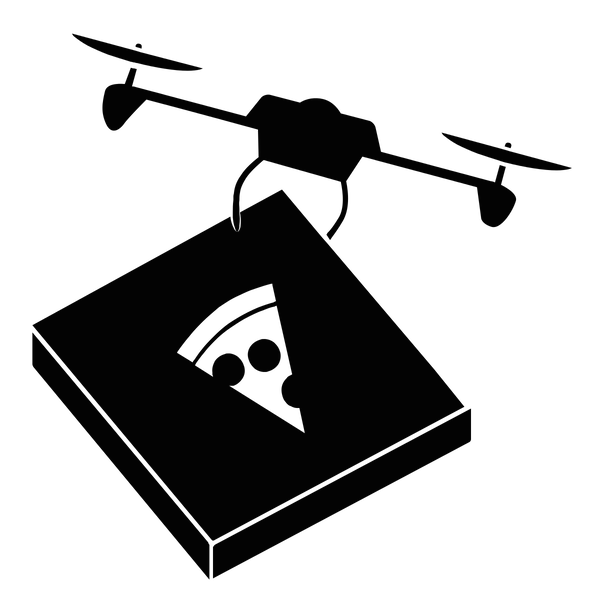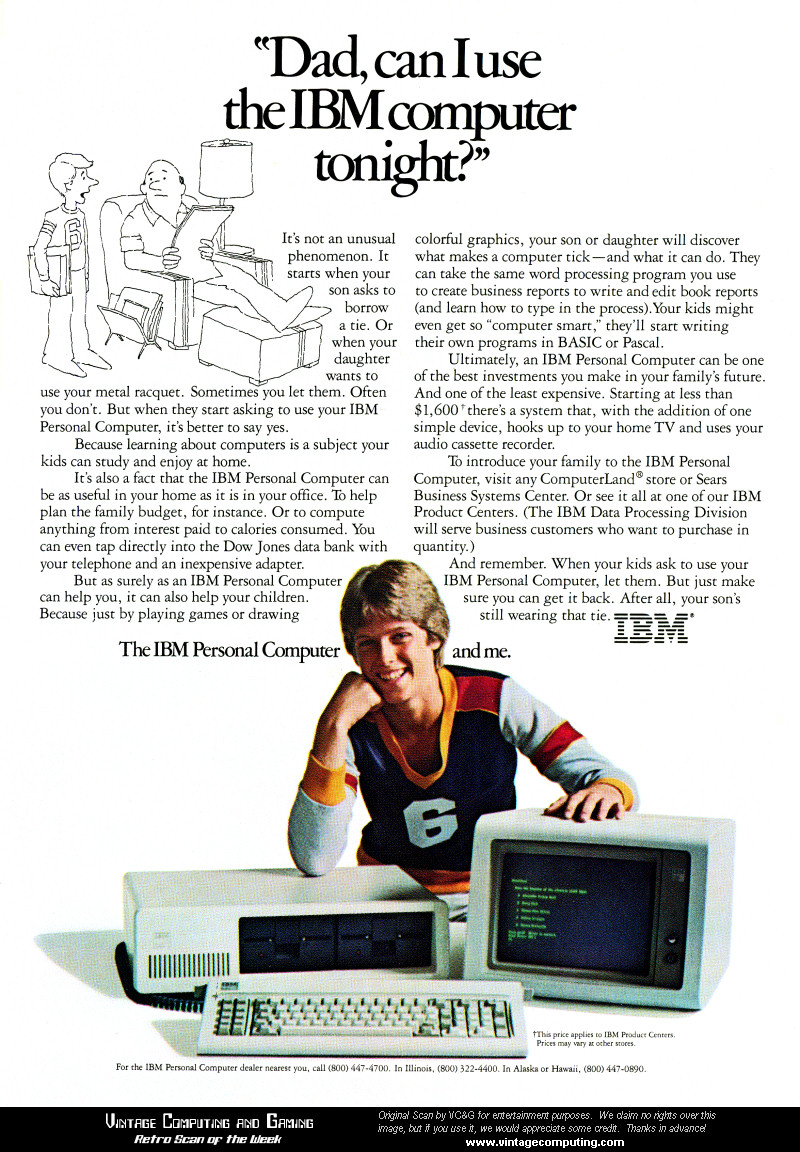
Chris Anderson has famously compared the nascent drone market to the early days of PCs, comparing it with the Homebrew Computer Club, the Bay Area hobbyist meetup where the Apple I was first unveiled. It may seem an odd comparison—the drone is thought of as military technology and (more recently) luxury plaything, while the Homebrew Computer Club is remembered for its utopian beliefs about putting technology into the hands of the people. But while Apple's forays into personal computers were groundbreaking, the "PC" abbreviation historically referred to its greatest threat, the IBM PC standard, a revolutionary form of computer architecture that was easily licensed and copied, and which shaped the personal computer market for over a decade. Drones do not yet have a "PC standard," but if they did, it might be the tipping point that could catapult drones into the mainstream and unlock their social utility.
We have yet to see what this social utility will be. Militarized drone technology has a well-established place among the many tools of the surveillance state. Looking at the history of the computer's shift from an awkward, heavy, military and commercial engineering project to something we carry in our pockets, one wonders how drones might make a similar transition. Some of the first ideas for non-military drones, such as catching poachers, have some way to go in development before they will actually be useful. So far, one of the best uses for drone technology is in the field of cartography. Drones like senseFly's eBee can map a large area very quickly, and rectify imagery to GPS maps. But drones like these cost thousands of dollars and run proprietary software in order to work so seamlessly. What if drone technology were to be transformed in a similar manner to computers, so that standard architecture and operating systems allowed cheaper, more universal hardware and software?
In the late 1970s, desk-sized computers were typically terminals linked to mainframes where the real processing was done. But with the miniaturization of transistor functions into integrated circuits, desktop computers became possible.These early personal computers were sold as kits, and required a hefty investment as well as technical know-how to assemble and operate. When the Apple II was introduced in 1977, it was one of the first "out of the box" personal computers; BYTE magazine called it the first "appliance computer". But the Apple II was still expensive, and with an operating system and architecture limited to this machine only, all compatible software had to be designed specifically for this system. In 1980, less than 10% of 14 million small businesses in the US had personal computers, and of large corporations, less than 3% used personal computers on a regular basis.1 Investing in a limited hobby system was not a priority for most companies.
IBM, one of the primary providers of business computers and machines in the 1970s, did not want to be left behind by Apple, Tandy, Atari, and the other hobbyist offerings, and set out to design their own. But rather than simply introduce another competing proprietary system, they produced an open system. They designed an architecture that was larger than necessary, accessible, and easy for the user to understand. They hired Microsoft to develop an operating system that could be licensed independently from the hardware.
Once the news got out that "Big Blue" was making a PC, peripheral and software companies sat up and took notice. Because they could easily reverse-engineer the architecture and license the OS, by the time the IBM PC hit the market, there were software and peripherals ready to be purchased alongside it. It wasn't long until cheaper, compatible clones were sold by other computer manufacturers, for which one could use the exactly same software and parts as for an IBM PC. As businesses began adopting personal computers and figuring out how to use them, they chose IBM PC-compatible systems; this, because they could be assured their investment wouldn't be outdated or isolated from other software and systems.

The IBM PC is a famous story in support of open standards—although IBM lost sales by not preventing cheap clones of their product, they gained the market domination of their design standard, which still enabled them to keep the widest potential customer base among businesses with the budget for large purchases. In addition, the standard allowed smaller companies to take the risk of spending their own development resources on designing software and peripherals. Companies like Lotus and Compaq—let alone Microsoft—would not have developed their own products without this standard to rely on (we can see the benefits of open standards in other technology as well, for example USB and WiFi 802.11 standards; and in the failure of Betamax video technology and HD-DVD, we can see what is at stake with competing proprietary design standards).
In the consumer drone swarm there are, as yet, no standards. The most popular consumer drones are the DJI Phantom line, which comes with a closed operating system and associated software. For more adventurous hobbyists, Chris Anderson's own 3DRobotics company sells kits using components such as the Pixhawk autopilot, which runs on the PX4 open-source firmware. But while this open-source system is a powerful tool for the hacker-minded drone operator, it isn't exactly accessible to those not familiar with unix-like OS. Even the US military's open standards for drone control have been unevenly adopted. The history of the IBM PC was not a targeted goal, but the combination of several technological factors that managed to come together at the right time.
An "IBM PC for drones" standard would likely make it much easier to self-assemble drones from component pieces—and to fix them if they broke. In the same way that one can pull together a motherboard, a hard drive, a power supply and a video card and have a functional computer, one could plug together a battery, an autopilot, some motors and speed controllers, an RF receiver and a sensor kit and have a functional drone. The open-source kits are moving in this direction, but we are not yet at plug-and-play.
Costs would also drop, as manufacturers would be certain that their newer, cheaper components could easily be subbed into the drone's open-architecture. Specialized software could be developed, certain to run on any drone, making some of the likely drone tasks that much more accessible: precision agriculture software, hobby flying software, aerial mapping software, or cinematic filming software. Currently, single-use drones designed for these specific tasks are sold by companies targeting one particular market. A cheap, standardized "drone clone" could enable a new generation of "drone literate" businesses and households, and from there, who knows what classes of new software would result.
We might remember that word processing and accounting software was hardly an obvious use for home PCs before the IBM PC clone price point made this market possible. Computers could handle text and data, but what this was "good for" was as yet undiscovered. Drones can handle imagery. What happens when you make a flying camera available to every home? Right now, we have drone selfies and mountain biking videos. But drones could provide analysis of home insulation, find the best place for solar panels or a satellite dish, inspect for roof leaks, or figure out how the squirrels are getting into the attic. Super accurate and updated aerial maps of neighborhoods could track infestations, help with urban gardening, track traffic patterns, map pedestrian and bicycle commuting, among many other data intensive tasks. An Australian company reported last week that it was using deons to find methane gas leaks released during fracking operations; demonstrators have used drones to monitor the police (and have sometimes had their drones shot down by officers). To discover what drones are "good for," we must separate them from what they are currently marketed for in closed, proprietary silos, and let people discover their uses themselves.

It's also likely that drones would be safer. DJI recently updated its software to ensure its drones couldn't fly in no-fly areas such as Washington DC. But that only applies to their drones. Standardized software could enable wide-reaching safety upgrades, such as when the FAA announces its rules for commercial drones, expected this year. Also, a standard architecture could allow new safety components, such as sense-and-avoid technology, the widest possible adoption. And compatibility standards could take security into account, requiring GPS systems to be resistant to spoofing, and drones' data collection to adhere to privacy standards. But of course, there will be downsides. There will be malware, just as there was when PCs became common and networked. There will be unresolved privacy issues, just as there are, still, with computers today.
But drones are not PCs, and a historical model is no guarantee of parallel development. In particular, there is considerable public anxiety about hobbyist drone usage in a way that differs from the reception of the personal computer. A recent Reuters/Ipsos poll found that Americans are much more comfortable with the use of drones by police than by news organizations or private individuals; this may prove to be a bigger barrier to its social utility than any technical standard. Perhaps drones will never be a widespread technology but a limited, specialist tool—more like a mail processing machine or a forklift than a computer, perfect for particular businesses but useless to others. At this point, as the technology continues to evolve, it is difficult to predict. But open standards for drones will put them in the hands of more people for purposes that go beyond law enforcement and surveillance, to help us discover what the capacities of this technology are, and in as many areas as possible.
Adam Rothstein's book Drone is out now from Bloomsbury as part of their "Object Lessons" series. Follow him on Twitter @interdome.
Drone icons by Max Cougar Oswald & Nihir Shah, via thenounproject.com. IBM PC ad from Time Magazine, January 18th, 1982.
Notes
1 James Chposky, Blue Magic: The People, Power, and Politics Behind the IBM Personal Computer (Facts on File, 1988), 10.